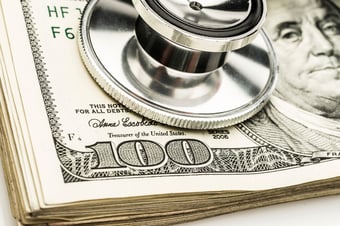While HAC penalties are hitting some hospitals, most fail to grasp the broader costs HAIs have on their future.
Are Hospital-Acquired Condition (HAC) Penalties Helping or Hurting Patients?
 Under the Centers for Medicare and Medicaid Services (CMS), a punitive measure was put in place in Section 3008 of the Patient Protection and Affordable Care Act (ACA) that established the Hospital-Acquired Condition (HAC) reduction program. This program effectively requires any hospitals with poor rankings in their HAC quality measure to have their reimbursements adjusted as a penalty. A hospital’s HAC score is calculated across six quality measures within the two domains of PIS and NHSN.
Under the Centers for Medicare and Medicaid Services (CMS), a punitive measure was put in place in Section 3008 of the Patient Protection and Affordable Care Act (ACA) that established the Hospital-Acquired Condition (HAC) reduction program. This program effectively requires any hospitals with poor rankings in their HAC quality measure to have their reimbursements adjusted as a penalty. A hospital’s HAC score is calculated across six quality measures within the two domains of PIS and NHSN.
While financial penalties impact a hospital’s bottom line, it’s a measure that falls flat for two reasons. First, the hospitals that can afford to take these hits may just accept it (and ultimately, their number of HAIs) as a cost of doing business that is budgeted and planned for each year. If that’s the case – we should all be worried that hospitals are not solving the real problem.
Secondly, for the hospitals with safety issues, taking funding away is only compounding an existing problem that ends up punishing patients, not hospitals.
There is an abundance of research detailing the costs of the five most common Hospital Acquired Infections (HAIs), which is estimated to cost the U.S. $9.8 billion annually. Yes, with a b! This graphic on The Center for Disease Dynamics, Economics & Policy shows the breakdown by type of infection.
As you can see, this data is public and available to consumers. The Advisory Board has created an interactive map that allows you to view hospital readmissions and HAC penalties and the financial hit they take by not addressing the issues. In an interview with Eric Fontana, a managing director with Advisory Board's Financial Leadership Council, he saw that the data proved the points above. With penalties racking up, already struggling hospitals may not be around unless they focus on solving the root problem of HAIs.
The Clinical, Operational and Reputational Costs of Hospital Acquired Infections (HAIs)
There are many unseen costs of Hospital Acquired Infections (HAIs) felt by staff and patients that impact a hospital’s image and long-term business.
Your Patients
Various studies have shown the drastic impact of HAIs on a patient’s length of stay, ranging from an extra 14 to 20 days when compared to individuals who did not experience an infection while receiving care. According to the CDC, the 1.7 million HAIs each year leads to almost 100,000 patient deaths annually and an additional $20 billion in related costs, stemming from:
-
Increased length of stay
-
Staffing resources to respond to, investigate and treat a patient’s HAI
-
Bed availability if a patient needs to be quarantined
-
Equipment to address more HAIs across more patients
-
Additional patient testing and drugs to treat HAIs
Your Employees
Staffing continues to be a challenge in acute care facilities. Patient-to-nurse ratios are rarely 1:1 anymore and that impacts both your staff and patient care. A 2016 Medscape survey reported 53% of nurse respondents did not feel satisfied with the care they had provided at the end of a typical shift; 57% believe patient care is suffering.
Overworked front-line staff suffers from low morale and not enough bandwidth to take more on in an effort to combat HAIs, including time spent on pen and paper audits and secret shopper programs. This all contributes to high turnover and the cycle repeats.
Your Reputation
Unfortunately, many people have an HAI horror story or know someone who has one. In markets where people have a choice of hospital, “word of mouth” related to safety and the quality of care received can greatly impact a patient’s decision. On top of patient word-of-mouth, employees also talk about their hospital’s environment and outcomes with both prospective patients and employees. This can further hurt a hospital’s ability to hire and retain top talent in the local market.
HAC penalty and HAI data are publicly available, giving consumers access to information about the risk different hospitals pose. Even for hospitals that are currently working on reducing HAIs in their hospitals, perceptions haven’t shifted – there is still a lack of understanding of the problem in the first place and the consistency of messaging thereafter.
Utilizing Technology To Reduce Costs of Hospital Acquired Infections (HAIs)
Hospitals who want to reduce their fines or even move toward a zero harm policy when it comes to HAIs are utilizing electronic hand hygiene systems to quickly address their infection rates. SwipeSense is one such system that takes on the burden of data collection and analysis of each hand washing or sanitizing opportunity, allowing employees and staff to drive behavior change and focus on what matters most – patient care.
Contact us to discuss how our system can save you time and money while protecting your reputation.


